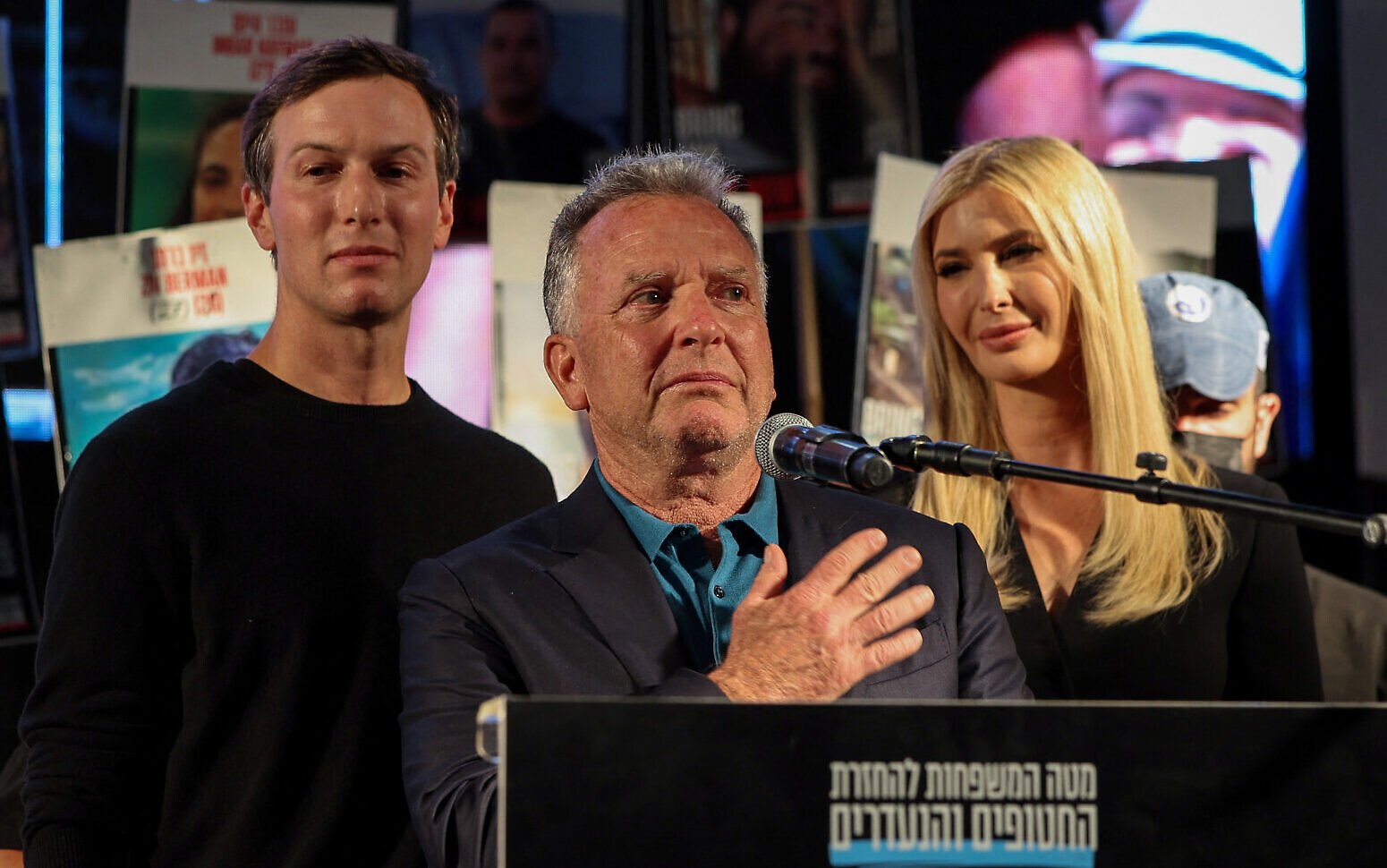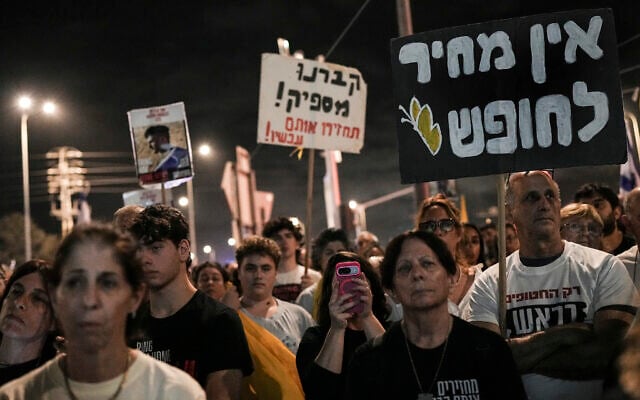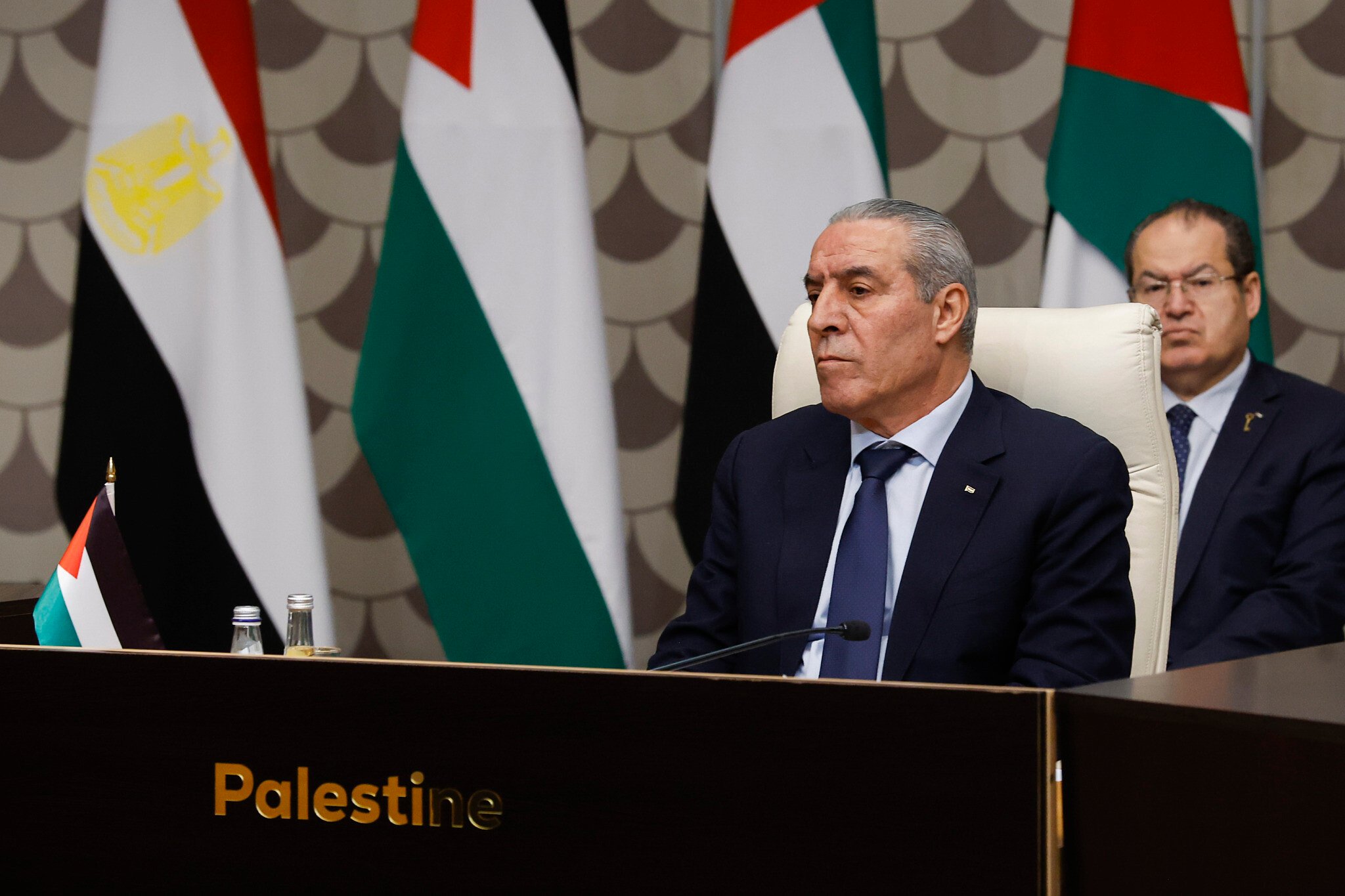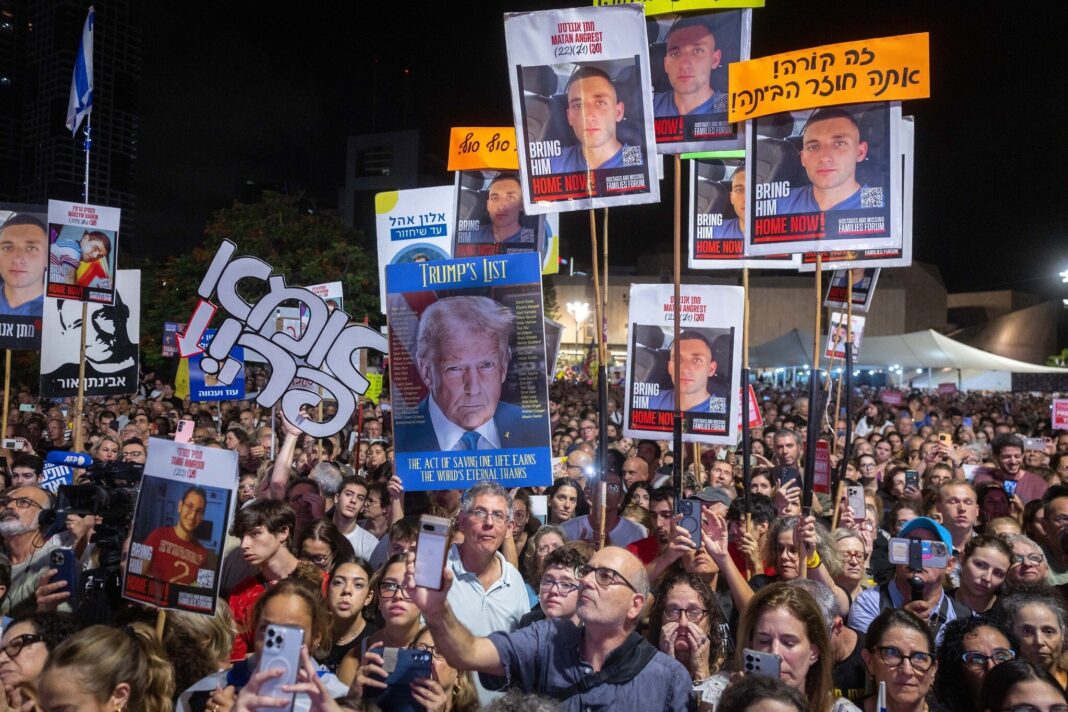The release of the hostages from Gaza is expected to begin on Monday morning, Hamas and Israeli officials said over the weekend, though some uncertainty remains regarding the timing.
Under the terms of the ceasefire agreement reached on Thursday, the IDF had 24 hours to complete its initial withdrawal in Gaza. Hamas was given a window of 72 hours after the withdrawal to release the 48 hostages, 20 of whom are thought to be alive.
The IDF completed its withdrawal by noon on Friday, commencing the 72-hour period. Israel will release some 2,000 Palestinian prisoners in exchange for the hostages.
In a Friday message seen by The Times of Israel, the Israeli government’s pointman on the hostages, Gal Hirsch, told relatives of the captives that Israel believed “the process of releasing your loved ones — our loved ones, the hostages — will begin on Monday morning.”
“Living hostages will be handed over to us, and it is expected that the remains of fallen hostages will also be transferred to us,” he wrote. Bodies of dead hostages will be transferred “in a painful and respectful ceremony” to the Institute of Forensic Medicine to be identified, he added.
Top Hamas official Osama Hamdan appeared to confirm that schedule, telling AFP that “according to the signed agreement, the prisoner exchange is set to begin on Monday morning as agreed, and there are no new developments on this matter.”
Prime Minister Benjamin Netanyahu’s hostage point man, Gal Hirsch, attends a meeting of the Knesset National Security Committee, September 28, 2025. (Noam Moskowitz, Office of the Knesset Spokesperson)
But some Israeli sources signaled that uncertainty remains. On Saturday, Channel 12 reported that a senior Israeli official said “not all timing details are clear to Israel.” The official did not blame Hamas for intentionally stalling the hostage release, instead saying the ambiguity is apparently due to the terror group’s logistical preparations.
The report added that the releases could begin as early as Sunday night if conditions permit. Talks are ongoing with the International Committee of the Red Cross, which is set to coordinate the transfer of hostages, the network said.
The official added that the exact time of the release will likely only be known a few hours in advance.
In addition, Hamas has previously said that it anticipated difficulty locating the bodies of some of the deceased hostages within the 72-hour deadline.
In his message to relatives of hostages, Hirsch said that after Israel verifies the identities of the bodies it received, a multinational task force will start searching for any bodies still in Gaza that the terror group cannot locate.
“We demand, expect, and work for 100% effort from Hamas, with the assistance of the international force, in order to complete the mission and bring back all the fallen hostages for burial in Israel,” he wrote.

US Special Envoy for the Middle East Steve Witkoff (center) speaks at Hostages Square in Tel Aviv, accompanied by Jared Kushner (L) and Ivanka Trump, on October 11, 2025. (Jack GUEZ / AFP)
In a meeting with relatives of hostages on Saturday evening, US special envoy Steve Witkoff echoed that concern, saying it could be very hard to locate some of the bodies, Channel 12 reported.
The families were deeply troubled by Witkoff’s assessment and were pleading for Israel to do everything possible to return every hostage, the report said.
Israel has known since before ratifying the agreement on Friday that some of the dead hostages may not be located. Prime Minister Benjamin Netanyahu has been aware of that possibility for months, three Israeli officials told CNN.
One official said seven to nine bodies might not be retrieved, while another put the figure at between 10 and 15. The CNN report was not publicly confirmed by Israeli authorities.

Demonstrators attend a rally for the release of Israeli hostages held in the Gaza Strip, outside the Gaza border city of Sderot, on October 11, 2025. (Tsafrir Abayov/Flash90)
When the release happens, the hostages are expected to either be transferred together at a single collection point, or freed simultaneously at several locations across the Strip. Israeli officials have assessed that Hamas prefers to concentrate all hostages at one location ahead of their release, Channel 13 reported.
Following the return of the hostages, Israel will proceed with the release of about 2,000 Palestinian prisoners. Of those, 250 are security prisoners serving life terms for deadly terror attacks, while another 1,700 are Gazan detainees arrested over the course of the two-year war.
The release of the hostages and Palestinian security prisoners is the focus of the ceasefire deal’s first phase. The details of the rest of the agreement — concerning the disarmament of Hamas and Gaza’s post-war future — have yet to be hashed out by negotiators.

Senior Palestinian Authority official Hussein al-Sheikh attends a meeting with US Secretary of State Antony Blinken and other foreign ministers, amid the ongoing conflict between Israel and the Palestinian Islamist group Hamas, in Amman, Jordan, on November 4, 2023. (Jonathan Ernst/Pool photo via AP)
The deputy head of the Palestinian Authority, Hussein al-Sheikh, told the Saudi Al-Arabiya news channel on Saturday that he will meet with former British prime minister Tony Blair in Jordan on Sunday to discuss the “day after” the war in Gaza.
According to the plan presented by the White House, Blair is slated to take a leading role in the international body that will oversee Gaza during a transitional period envisioned by the agreement.
The PA has been vying for a foothold in Trump’s framework for post-war Gaza, which describes an internationally-supervised technocratic Palestinian committee governing the territory after the war. The agreement requires the West Bank-based PA to undergo reforms before it can assume power.
Nurit Yohanan and Jacob Magid contributed to this report.
First Appeared on
Source link





